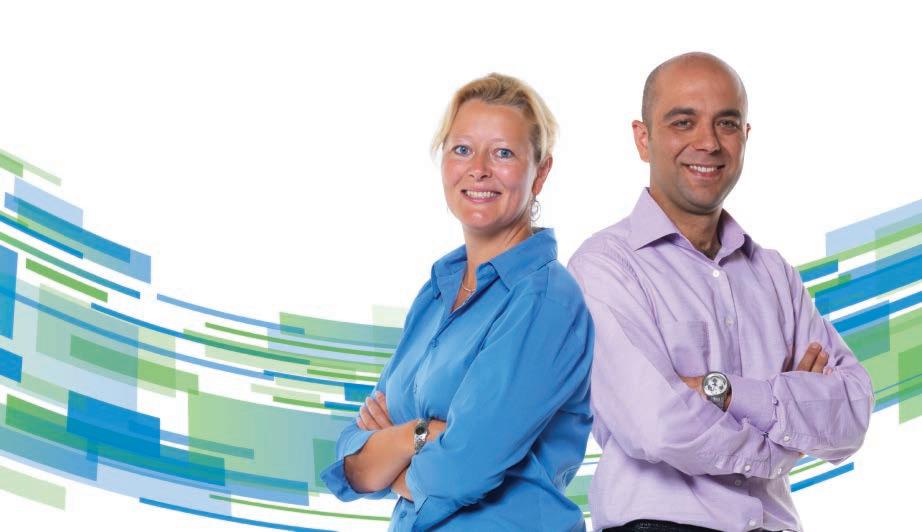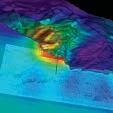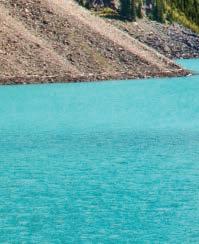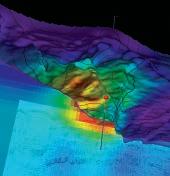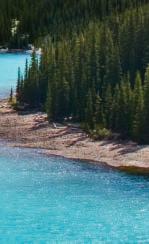





> GEOSCIENCE SOFTWARE
> CRITICAL INFORMATION
> CONNECTED WORKFLOWS












> GEOSCIENCE SOFTWARE
> CRITICAL INFORMATION
> CONNECTED WORKFLOWS








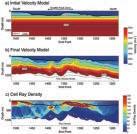
The IHS suite of geoscience software—which includes IHS Petra®, Kingdom®, LOGarc™ and GeoSyn™—is designed to seamlessly connect to the industry’s leading source of critical Oil & Gas information, eliminating the need to move data manually from source to source and project to project. With this powerful new combination, users can streamline data transfer, enhance database performance and simplify project sharing. The result? Workflows that connect like never before.
Connected workflows mean that IHS customers spend less time looking for data and more time looking for the next big opportunity. It’s just one of the many ways that IHS helps to advance the decisions that advance the Oil & Gas industry.
Find out more at IHS.com/geoscience

CSPG OFFICE
#110, 333 – 5th Avenue SW
Calgary, Alberta, Canada T2P 3B6
Tel: 403-264-5610
Web: www.cspg.org
Office hours: Monday to Friday, 8:30am to 4:00pm
Executive Director: Lis Bjeld
Tel: 403-513-1235, Email: lis.bjeld@cspg.org
Event Coordinator: Kristy Casebeer
Tel: 403-513-1226, Email: kristy.casebeer@cspg.org
Geoscience Coordinator: Kelsey Green
Tel: 403-513-1225, Email: kelsey.green@cspg.org
Member Services:
Tel: 403-264-5610, Email: membership@cspg.org
Publications and Website: Emma MacPherson
Email: emma.macpherson@cspg.org, Tel: 403-513-1230
GeoConvention 2014, Manager: Aileen Lozie
Tel: 403-513-1227, Email: aileen.lozie@cspg.org
Database Administrator and Accounting: Kasandra Amaro
Maternity leave until January 2014
Corporate Sponsorship: Lis Bjeld
Tel: 403-513-1235, Email: lis.bjeld@cspg.org
Controller: Eric Tang
Tel: 403-513-1232, Email: eric.tang@cspg.org
EDITORS/AUTHORS
Please submit RESERVOIR articles to the CSPG office. Submission deadline is the 23rd day of the month, two months prior to issue date. (e.g., January 23 for the March issue).
To publish an article, the CSPG requires digital copies of the document. Text should be in Microsoft Word format and illustrations should be in TIFF format at 300 dpi., at final size. For additional information on manuscript preparation, refer to the Guidelines for Authors published in the CSPG Bulletin or contact the editor.
Technical Editors
Hugh S. Mosher Colin Yeo (Assistant Tech. Editor) Nunaga Resources Ltd. Encana Corporation M.: 403-809-9997 Tel: 403-645-7724
Email: hsmosher@telus.net Email: colin.yeo@encana.com
Coordinating Editor
Emma MacPherson, Publications Coordinator, CSPG Tel: 403-513-1230, emma.macpherson@cspg.org,
ADVERTISING
Advertising inquiries should be directed to Emma MacPherson, Tel: 403-513-1230 email: emma.macpherson@cspg.org. The deadline to reserve advertising space is the 23rd day of the month, two months prior to issue date.
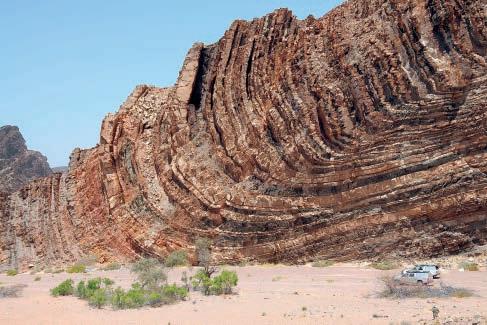


They can copy us. They just can’t be us.
If imitation is the sincerest form of attery, we’re one attered group.
Drawing on a quarter century of oil and gas experience, geoLOGIC continues to be the market leader in data, software solutions and support. And while we lead the way, our competitors desperately create parity products, sometimes years after us. For details on how geoLOGIC leads the way, visit www.geoLOGIC.com/leader
CSPG EXECUTIVE
PRESIDENT
Paul MacKay • Shale Petroleum Ltd. paul.mackay@shalepetroleum.com Tel: 403.457.3930
VICE PRESIDENT
Dale Leckie • Nexen Inc. daleleckie@nexeninc.com Tel: 403.613.0458
PAST PRESIDENT
Robin Mann • AJM Deloitte rcmann@deloitte.ca Tel: 403.648.3210
FINANCE DIRECTOR
Samantha Etherington • Barrick Energy SEtherington@barrick-energy.com Tel: 403.386.6459
ASSISTANT FINANCE DIRECTOR
Gord Stabb • Durando Resources Corp. gstabb@durando.ca Tel: 403.819.8778
PROGRAM DIRECTOR
Dave Russum • AJM Deloitte drussum@deloitte.ca Tel: 403.648.3228
ASSISTANT PROGRAM DIRECTOR
Alexis Anastas • Nexen Inc. alexis_anastas@nexeninc.com Tel: 403.699.4965
SERVICES DIRECTOR
Mike Seifert • Canadian Discovery mseifert@canadiandiscovery.com Tel: 403.269.3644
ASSISTANT SERVICES DIRECTOR
Weishan Ren • Statoil Canada Ltd. wren@statoil.com Tel: 403.724.0325
COMMUNICATIONS DIRECTOR
Curtis Evans • ERCB curtis.evans@ercb.ca Tel: 403.297.8386
ASSISTANT COMMUNICATIONS DIRECTOR
Riona Freeman • Harvest Operations Corp. riona.freeman@harvestenergy.ca Tel: 403.233.6624
OUTREACH DIRECTOR
Dawn Hodgins • Imperial Oil Resources dawn.hodgins@exxonmobil.com Tel: 403.232.5931
ASSISTANT OUTREACH DIRECTOR
Andrew Fox • MEG Energy Corp. andrew.fox@megenergy.com Tel: 403.770.5345
EXECUTIVE DIRECTOR
Lis Bjeld • CSPG lis.bjeld@cspg.org Tel: 403.513.1235
A message from Curtis Evans, Communications Director

A wise man (he had been pit foreman at the mine for seven years) once told me: you are either a tool to get work done or you are in the way and thus a problem. As I was a geologist in the pit doing nothing but taking photos of the endwall structures and getting in the way of the equipment, he saw me as a problem. I replied that his only purpose to me was to create new outcrop. Things went badly after that – I ended up buying lunch – but we are good friends now.
So … why is this article being written by a coal geologist? The simple answer is illustrated by the recent change to the CSPG office front that now displays the additional title: “Canada’s Energy Geoscientists”. The new tag line recognizes the fact that as geologists, we l ook at many aspects of geoscience from
a broad perspective. As coal is a form of energy and being a coal specialist I see and understand the benefits of being a member of a Petroleum Society. I am more interested in the tasks and knowledge we use rather than the energy sector in which we work.
A scientist is a person who can generate hypotheses, develop experimental processes that test those hypotheses, and then discuss the results with their peers. Geology is very much a natural science that emphasizes our observations of the natural occurrences of rock and associated fluids using tools like geophysical logs, seismic sections, modern analogues, and thin sections. This short list alone means that we are multi-disciplinary in focus and need technology and knowledge (Continued on page 7...)

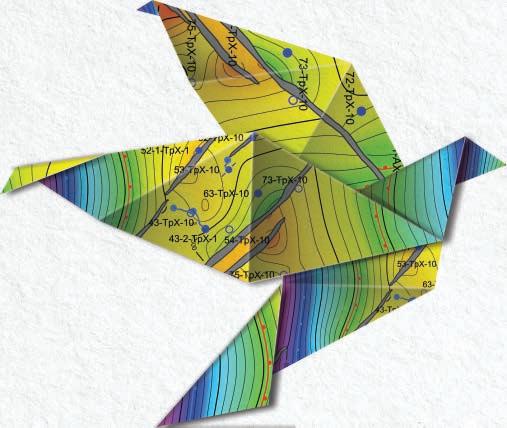



Give your productivity a lift with outstanding connectivity and an intuitive interface.
Petrosys software provides freedom to move between data sources effortlessly, access a broad range of data management capabilities and effectively model the subsurface. With our dynamic data aggregation and integration, you can identify, refine and resolve issues more quickly. What’s more, our clear, logical interface makes it easy to get started. Of course, there’s dedicated technical support and service when needed. Start achieving exploration and production targets at a lower cost and in a shorter time frame with Petrosys. Learn more at www.petrosys.com.au/transcend


CORPORATE SPONSORS
DIAMON D
GeoLOGIC Systems Ltd.
PLATINUM
APEGA
Cenovus Energy
ConocoPhilips Canada
Nexen
GOLD
Devon Energy Corp.
Encana Corporation
IHS
Imperial Oil Ltd.
PLS
Shell Canada Limited
SILVER
Arc Resources
Athabasca Oil Sands Corporation
CSEG Foundation
CSPG Educational Trust Fund
Enerplus
EOG Resources
LED Signs
Roke Technologies Ltd.
TAQA North Ltd.
BRONZE
AGAT L aboratories
Apache Canada
CNRL
Husky Energy Inc.
Loring Tarcore
Poggenpohl
RIGSAT Communications
RPS Energy
Schlumberger Canada Limited
Sensor Geophysical Ltd.
Suncor Energy
Talisman Energy
As of March 2013
A Special Thanks to Geologic Systems Ltd.,
CSPG ’s Top Sponsor of the Month
(...Continued from page 5)
from outside “pure” geology. The idea of finding extractable resources, whether they can be pumped out of the ground, piped to markets or need to be dug up and processed, makes our work fit the category of applied sciences with a bridge to the various engineering disciplines that form a large percentage of our teams at the office.
In addition to technology tools, geologists use the same knowledge tools regardless of industry sector. I place less relevance on whether you work in the industries of coal or oil/gas or groundwater resources. We all use sequence stratigraphy, geostatistics, structural deformation modeling, metamorphic gradients, organic geochemistry, and many other subdisciplines to different degrees. Yes, some geologists specialize in some aspects so that one person doing organic chemistry knows far more than the van Krevelen diagram while others only focus on “where is the gas window versus the oil window?” The industry does not dictate the science, but all aspects of science should be open to geologists in each industry. The processes of weathering and deposition followed by diagenesis are the focus for all and the supporting education and research is key to success and succession.
The succession concept directly applies to what publications the Society has and how they will be disseminated to the next generation of geologists. Where is Facebook? Twitter? How should the CSPG be viewed in the active world of email service? These are some of the questions I will try to answer in the next few months. My wish is to increase the utility of the “old school” paper formats as well as the new electronic publications. There is so much more out there, like publishing 3D geological structures electronically,but these new concepts require new ways of thinking about “publications” as society shifts from paper to electrons: the possibilities are vast.
So, for my tenure here, I hope to add to t he mandate of Communications and explore the world of electronic media versus paper versus something else very different and perhaps not yet invented.
I welcome any comments, thoughts or ideas you may have as the CSPG embarks on this new look at communications and how it may impact the membership. Feel free to contact me at curtis.evans@ercb.ca.

gravitational spreading,
SPEAKER
R aymond A . Price Professor Emeritus, Department of Geological Sciences & Geological Engineering, Queen’s University 11:30 am Tuesday, April 09, 2013 Calgary TELUS Convention Centre Calgary, Alberta
Please note: The cut-off date for ticket sales is 1:00 pm, Thursday, April 4, 2013. CSPG Member Ticket Price: $45.00 + GST. Non- Member Ticket Price: $47.50 + GST.
Each CSPG Technical Luncheon is 1 APEGA PDH credit. Tickets may be purchased online at www.cspg.org.
AB STRACT
The east-verging foreland thrust-and-fold belt of the eastern Andes, which is actively growing now behind and above the westverging Andean subduction zone, is an actualistic ‘plate-tectonic’ model for the origin and evolution of the Cordilleran foreland thrust-and-fold belt of southern Canada.
What we perceive of the deformation within the Cordilleran foreland thrust-and-fold belt depends upon the scale at which we observe it. All thrust faults die out along strike. When viewed at a scale that is larger than the largest thrust fault, the deformation involves large displacement and distortion without loss of overall cohesion. It is a product of lateral gravitational spreading flow analogous to that in an ice sheet.
In southern Canada the detached and

displaced supracrustal strata came mainly from three distinct, partly over-lapping basins: (1) the 1500-1400 Ma Belt-Purcell intracontinental rift basin (~ 20 km thick), (2) the 850–550 Ma Windermere intracontinental rift basin (~10 km thick), and (3) the 550-180 Ma Cordilleran miogeocline (a passive continental margin sedimentary terrace wedge (~ 10-15 km thick). A palinspastic map of an 850-km segment of the foreland thrust and fold belt between ~48° and ~54° N, based on restorations of six published balanced regional structure sections, shows the hanging-wall traces of the main thrust faults in both their present and palinspastically restored locations. This provides a framework for reconstructing the initial 3-D shapes, locations, and relationships among the three basins, and their relationships to the structure of the Paleoproterozoic basement extending under the Rockies from Alberta, where it has been outlined with magnetic and gravity anomaly maps, dated samples from deep boreholes, and deep geophysical imaging by industry and ‘Lithoprobe’. Isopach maps of the estimated sediment thickness in the three basins illustrate their overlap and truncation relationships. The major negative Bouguer gravity anomaly of the SE Canadian Cordillera coincides with the thrust overlap of the displaced, allochthonous eastern margin of the miogeocline relative to the corresponding autochthonous basin-margin ramp. South of 50° N, the eastern margins of both the miogeocline, and Windermere basins, are deflected ~220 km southwest across the Belt Supergroup, along the Crowsnest Pass cross-strike discontinuity (CPCD), a transverse northeast-trending fault zone created by reactivation of part of a Paleoproterozoic tectonic suture in the basement that extends under the Cordillera from the Vulcan structure southeast of Calgary. Near the CPCD, the southeast
Webcasts sponsored by
edge of the miogeocline overlaps the Windermere basin and lies directly on the Purcell Supergroup.
Comparisons of the palinspastic map with the geological map and with a map of the Paleoproterozoic basement illustrate how tectonic heredity has influenced mountain building. When detached supracrustal strata were displaced up basin-margin ramps and over the flat surface of the under-riding continental craton, the deep (> 5 km) structural relief of the sedimentary basins was tectonically ‘inverted’ by forming high structural culminations. Steep, deep basinmargin thrust ramps were transformed into the steep topographic slopes of highelevation structural culminations. These culminations provided the gravitational potential for lateral spreading that formed differently oriented thrust-and-fold wedges. For example: The northwest trend of the thrust-and-fold belt in northern Montana was inherited from the orientation of the margin of the Belt-Purcell basin. The northsouth trend of the thrust-and fold belt in the southern Alberta and British Columbia was inherited from the north-south trend of this part of the margin of the Cordilleran miogeocline. The orientation of the local northeast-trending, southeast-verging thrust-and-fold structures in southeastern British Columbia was inherited from the dextral offset in the margin of the Cordilleran miogeocline, which was, in turn, inherited from the orientation of the Paleoproterozoic Vulcan structure.
In the southern Canadian Rockies, the overall horizontal convergence between the North American craton and the Cordilleran accreted terranes, as clearly expressed in the tectonic shortening of the detached and displaced supracrustal rocks, ranges from ~300 km to ~100 km. It decreases northwestward because some of the convergence was transformed into dextral displacements on large strike-slip faults during Late CretaceousPaleocene transpression. However the mode of accommodation of the equivalent convergence between the North American crust and mantle lithosphere, from which the supracrustal strata were detached, and the eastward subducting slab of oceanic lithosphere underlying the accreted terranes is a long-standing enigma. But this enigma may be resolved by recent advances in the elucidation of the nature and geodynamic significance of a wide zone of high heat flow and anomalously shallow asthenosphere that
occurs above the subducting Juan de Fuca slab in the back-arc region of the Cascade subduction zone, and by the realization that similar hot back-arc regions occur around the Pacific rim, beneath the high plateau of the Andes in the east as well as beneath back-arc ocean basins in the west. The current consensus is that the high temperatures are sustained by retrograde mantle flow (‘corner flow’) that is driven by viscous coupling between the subducting slab of oceanic lithosphere and overlying parts of the mantle wedge, and by reciprocal buoyant upwelling of asthenosphere that carries heat from outside the subduction zone region into the mantle wedge. This pattern of subduction related retrograde mantle flow might provide a key to understanding several otherwise enigmatic aspects of the tectonic evolution of the southern Canadian Cordillera, and other continental margin orogenic belts.
In the southern Canadian Cordillera, retrograde mantle flow behind the Late Triassic Nicola arc that was coupled with the sinking Cache Creek oceanic lithosphere may be responsible for the collapse of the Slide Mountain back-arc basin and the Early Jurassic obduction of Slide Mountain terrane over North American strata.
Retrograde back-arc mantle flow also may have induced the delamination and removal of the oceanic crust and lithosphere of Quesnel terrane, which was detached and displaced northeastward, as the “tectonic flake,” over North American basement as imaged by ‘Lithoprobe’ under central British Columbia. Upward mantle flow may account for the present high-elevation mountains in the southeastern Canadian Cordillera.
Ray Price is a graduate of the University of Manitoba (B.Sc., Hons., 1955) and Princeton University (Ph.D., 1958). He has been: a field geologist with the Geological Survey of Canada (1958-1968), Professor of Geological Sciences at Queen’s University (1968-1980), Director–General of the Geological Survey of Canada (1981–1987), Assistant Deputy Minister (Earth Sciences Sector) Energy Mines and Resources Canada (1987-1988), a Senior Research Scientist with the Geological Survey of Canada (1988-1990), and Professor of Geological Sciences and Geological Engineering at Queen’s University (1990-1998).
He has also served as President of the International Council of Scientific UnionsInter–Union Commission on the Lithosphere (1980-1985), as President of the Geological
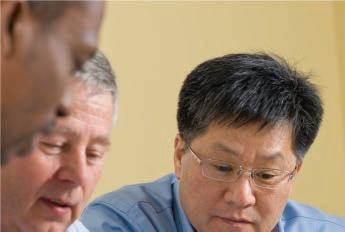

Society of America (1989-1990), as Chairman of the Scientific Review Group, for the Federal Environmental Assessment Panel to Review the Proposed Deep Geological Disposal of Canada’s Nuclear Fuel Wastes, (1990-1996), and as Chairman of the Board of Trustees of the Sudbury Neutrino Institute (1995-2006). Ray participated in the geological exploration and mapping of large areas within the southern Canadian Rocky Mountains for the Geological Survey of Canada between 1956 and 1968; and subsequently, with his graduate students, he has been involved in tectonic studies in the southern Canadian Rocky Mountains and in the Purcell, and Selkirk Mountain of southern Canada and northern U.S.A.
He has collaborated with Jim Monger in several studies of the tectonic evolution of the Canadian Cordillera and on numerous transCordilleran geological field trips. Since 1998 Ray has been Professor Emeritus of Geological Sciences and Geological Engineering at Queen’s University, where he is engaged in palinspastic reconstructions and tectonic analysis of the southeastern Canadian Cordillera – the subject of his ‘CSPG Technical Luncheon Talk’.


SPEAKER
Jeffrey A . M ay
AAPG Distinguished Lecturer
11:30 am
Wednesday, A pril 17, 2013 C algary TE L US C onvention C entre C algary, A lberta
Please note: The cut-off date for ticket sales is 1:00 pm, Friday, April 12, 2013. CSPG Member Ticket Price: $45.00 + GST NonMember Ticket Price: $47.50 + GST.
Each CSPG Technical Luncheon is 1 APEGA PDH credit. Tickets may be purchased online at www. cspg.org.
AB STRACT
Mudrocks comprise any deposit with >50% of grains <62 microns in size. Composition, fabric, and texture often are extremely variable. Major influences on these parameters include tectonic setting, source terrane, basin physiography, water depth, circulation and upwelling, oxygenation, climate, eustasy, and detrital influx. Thus, mudrock character – which ultimately controls the distribution and deliverability of hydrocarbons – is anything BUT homogeneous.
Macroscopic core description, tied to stratigraphic framework and integrated with lab analyses and petrophysical interpretation, is critical in understanding variability and deciphering patterns in composition, fabric, and texture. A rich diversity of facies can be discerned. Sedimentary structures such as ripple cross laminae, graded bedding, scour surfaces, rhythmic couplets, and minute burrows to “cryptobioturbation” are
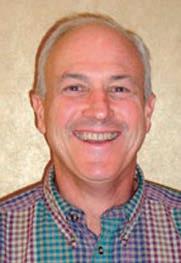
common. Stratigraphic variations in these features relate directly to changing depositional conditions and sequence position.
Mudrocks do not simply fill basins passively. Competition between extrabasinal input and intrabasinal biogenic productivity creates conditions for lithologic cycles, clinoform geometries, and water-column stratification. Benthic fauna colonize the seafloor during dysaerobic to aerobic periods, and then experience “terror” during periods of mass transport. An understanding of these stratigraphic relationships requires regional correlations that commonly cover thousands of square miles.
Depositional patterns from basins of the Rocky Mountains, Gulf of Mexico, and Canada suggest that mudrock reservoirs are associated with distinct sequence stratigraphic hierarchies. Most prospective mudrock intervals develop during 2ndorder transgressions. In basins with strong extrabasinal sediment influx, the better reservoirs require load-bearing grains and typically form during either 3rd-order highstands or lowstands. By contrast, in basins dominated by intrabasinal biogenic material the best reservoirs often occur in 3rd-order condensed sections. Such units are frequently brittle, with low clay content, high TOC, and abundant microfossils. Thus, the integration of rock description and sequence framework provides better insight into lateral and vertical changes in mudrock character and reservoir targeting.
Webcasts sponsored by
BIOGRAPH Y
Jeff received his B.A. in Geology from Earlham College, M.S. in Geology from Duke University, and Ph.D. in Geology from Rice University. He has worked in the oil and gas industry for 30 years: as a research geologist with Marathon Oil Company (1981-1994); as a geological and geophysical consultant with Enron Oil & Gas (1994-1996) and GeoQuest Reservoir Technologies (1996-1998); as an exploration geoscientist with DDD Energy (1998-2001); and with EOG Resources since 2001, first as Chief Stratigrapher and more recently as Chief Geologist, until his retirement in 2011.
Jeff has conducted sedimentologic, sequence stratigraphic, and seismic stratigraphic projects on basins and fields worldwide. Areas of expertise include onshore and offshore Gulf of Mexico; onshore and offshore California; Uinta, Green River, Washakie, Denver, Powder River, and Williston Basins; northern and eastern Egypt; and Natuna Sea, Indonesia. At EOG, he provided regional to prospect-scale stratigraphic interpretation and evaluation plus training in support of all divisions. Jeff also conducts a variety of classroom and field seminars on clastic facies, deep-water sandstones, mudrock deposition and stratigraphy, and sequence stratigraphy, most notably for the American Association of Petroleum Geologists, Nautilus, oil and gas companies, and many universities. In addition, he has published numerous papers and abstracts on deep-water sandstones, sequence stratigraphy, geophysical interpretation, and mudrock deposition.
SPEAKER
M ary L uz Borrero
11:30 am
T hursday, M ay 23, 2013 C algary, TE L US C onvention C entre E xhibit H all E , N orth Building C algary, A lberta
Please note: The cut-off date for ticket sales is 1:00 pm, Thursday, May 16, 2013. CSPG
Member Ticket Price: $45.00 + GST NonMember Ticket Price: $47.50 + GST
Each CSPG Technical Luncheon is 1 APEGA PDH credit. Tickets may be purchased online at www.cspg.org.
AB STRACT
Advances in thermal recovery technologies have made the unconventional resources in the Grosmont carbonate platform a focus of interest in the last couple of years. The Grosmont platform which includes the Grosmont Formation and the Hondo
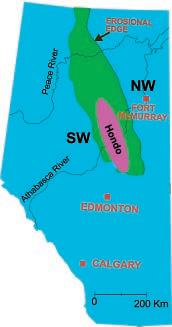
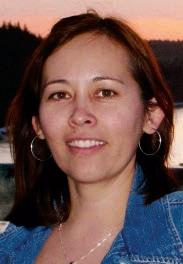
evaporites is part of the Woodbend Group, the world’s largest heavy oil deposit hosted in carbonates with an estimated 318 to 406 billion barrels of oil in place. A detailed log interpretation, core examination; facies description; strontium, sulphur, carbon, and oxygen isotope analysis were carried out in the present research. Underlain the Grosmont platform there are the Leduc-age reef complexes, deposited during the major late-Frasnian regression in the Western Canada Sedimentary Basin. Significant accumulations of “heavy oil” and bitumen occur in east-central Alberta at depths of 250 m to approximately 1200 m within the updip-pinchout of the Devonian Woodbend Group with the overlying SubCretaceous unconformity (Figure 1).
Webcasts sponsored by
The Grosmont shelf complex represents an overall shallow marine carbonate platform that is further subdivided into four shallowing-upward cycles: Lower Grosmont (LGM), Upper Grosmont1 (UGM1), Upper Grosmont2 (UGM2), and Upper Grosmont3 (UGM3). These units are separated by layers of marl of the Lower Ireton Formation that are named consecutively SB1, SB2, and SB3, and can be identified on gamma ray and resistivity well logs. The Hondo evaporites is an evaporitic sub-unit within the Grosmont and replaces part of the four cycles in certain portions of the complex. Depositional setting has been interpreted mostly as marine sourced gypsum/anhydrite with some halite in subaqueous salinas or lagoons. Fine layers of dolomudstone were deposited with the evaporites in quiet waters at depths between 2 and 5m. The evaporites or “primary sulphates” were observed within the upper part of the Grosmont Formation (UGM3) and Lower Grosmont (LGM) and are interpreted to occur either in a series of relatively small ponds or in a larger lagoon (Figure 2). Syndepositional faulting and presence of Leduc reefs may have been responsible for restricted conditions and accommodation space in order to precipitate evaporitic minerals. The Grosmont Platform migrated westward between LGM and UGM3 times.
In the eastern part of the area, the Hondo appears to have been dissolved
(Continued on page 13 ...)
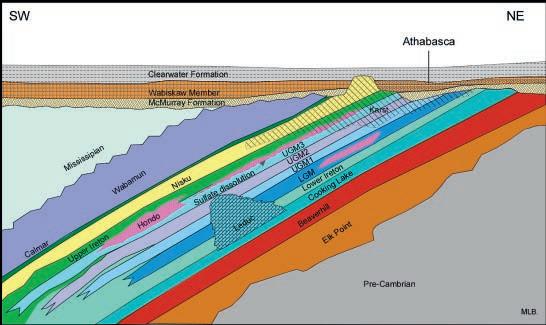
Deep-Water Siliciclastic Reservoirs
April 14-19, 2013 Northern California
Basic Well Log Analysis
April 15-19, 2013 Austin, TX
Petrophysical Analysis and Integrated Approaches to the Study of Carbonate Reservoirs
April 16-18, 2013 Austin, TX
E-Symposia: Successful Oilfield Water Management
April 16, 2013 2:00 p.m., CST
Clastic Reservoir Facies and Sequence Stratigraphic Analysis of Alluvial-Plain,
April 20-26, 2013 Shoreface, Deltaic, and Shelf Depositional Systems
Utah Basic Tools for Shale Exploration
May 18, 2013 Pittsburgh, PA (with AAPG Annual Convention & Exhibition)
Integrating Data to Evaluate Shale Resources
Early-bird rates end April 19!
May 18-19, 2013 Pittsburgh, PA (with AAPG Annual Convention & Exhibition) Early-bird rates end April 19!
Faults in the Northern Appalachian Basin and Their Effects on Black Shale
May 19, 2013 Pittsburgh, PA (with AAPG Annual Convention & Exhibition)
Early-bird rates end April 19!
Application of Organic Petrology for Shale Resource Evaluation May 23, 2013 Pittsburgh, PA (with AAPG Annual Convention & Exhibition)
Summer Education Conference – 11 courses over 5 days!
Early-bird rates end April 19!
June 10-14, 2013 Fort Worth, TX
Geology of Grand Canyon, Bryce Canyon and Zion National Park
June 1-7, 2013 Nevada
Play Concepts and Controls on Porosity in Carbonate Reservoir Analogs
June 2-7, 2013 Almeria, Spain
Folding, Thrusting & Syntectonic Sedimentation
June 3-7, 2013 Central Pyrenees, Spain
Lacustrine Basin Exploration
June 9-16, 2013 Utah
Download

(...Continued from page 11)
and replaced by solution collapse breccias and “bitumen supported” intervals. Alternatively, in the western part of the study area the Hondo may form effective
reservoir seals on the scale of the sizes of these ponds. The role of the Hondo as a seal for hydrocarbon migration and entrapment is somehow difficult to assess
because it cannot be ascertained whether the evaporitic minerals originally formed a regionally extensive deposit on the scale of the entire study area, and how much was removed by post-depositional dissolution. Possible modern analogs in terms of climatic conditions are the Abu Dhabi region in the southern part of the Arabian Gulf and the Great Bahama Bank in terms of the size of the carbonate platform, although without actual evaporitic deposition.
Mary Luz Borrero received her B.Sc. (Honours) degree in Geology from the Universidad Industrial de Santander, in Colombia, South America. This was followed by a couple of years of oil and gas research at the Instituto Colombiano Del Petroleo in Bucaramanga. In 2006 Mary came to Canada with a partial scholarship from Colombia –Colfuturo and was lured to the University of Alberta by Dr. Hans Machel to work on the evaporitic unit in the Grosmont Complex. While finishing her thesis, Mary continued to do research with Dr. Machel at the University of Alberta. In 2012, her M.Sc thesis “Hondo Evaporites within the Grosmont Heavy Oil Carbonate Platform, Alberta, Canada” was awarded as the best MSc. thesis by the CSPG. This thesis was partly funded by Shell Exploration & Production Company, Houston, where she worked during some summer times. Nowadays, Mary is working for Husky Energy as an exploration geologist in the Western Canada Sedimentary Basin.
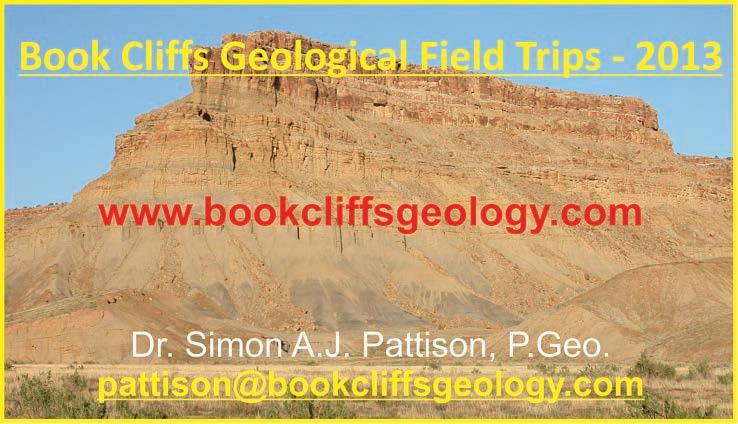
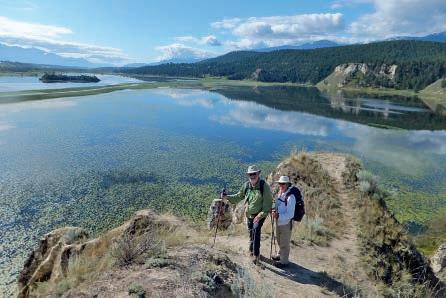 by: Bill Ayrton
by: Bill Ayrton
New geologists, engineers, geophysicists and landmen, as well as summer students entering the industry for the first time will find the courses a very beneficial introduction to the petroleum industry. These courses will be extremely useful to nonprofessional and support staff in the oil and gas industry, as well as accountants, lawyers, brokerage and financial personnel working primarily alongside the oil and gas industry.
To register or to obtain additional information regarding in-house and upcoming courses, please contact:
Ayrton Exploration Consulting Ltd.
Tel: (403) 262-5440
Email: ayrtonex@shaw.ca
Or visit our website: www.ayrtonexploration.com
Date: May 1st and 2nd, 2013
Cost: $1050 (includes GST)
Instructor: Bill Ayrton
Effective for personnel just joining the oil patch, or for financial, accounting, and information systems personnel.
• Learn about the many facets of the industry.
• Oil finding, land acquisition, drilling, seismic, well completion, jargon and terminology.
Date: May 15th and 16th, 2013
Cost: $1050 (includes GST)
Instructor: Bill Ayrton
Effective for geological technicians or administrative staff, or for those who just want a better understanding of geology to appreciate the world around us.
• Learn about earth structure, geologic time-scale and processes, Western Canada geology, and interesting nearby locations.
• Participate in a rock identification exercise, cross-section project and a mini-field trip in downtown Calgary.
Date: June 4th, 5th, and 6th, 2013
Cost: $1575 (includes GST)
Instructor: Bill Ayrton
Ideal for those who wish to improve their geological understanding of where and how we look for oil and gas fields in Western Canada.
• To visualize what Western Canada looked like throughout the stages of history, for example, the position of the sea versus land, what sediments were deposited, and what type of life that existed and evolved.
• To review the importance of each major stratigraphic unit, i.e. Devonian, Mississippian, Cretaceous, etc.
• Discuss the geological and seismic expression of typical oil and gas fields in each unit.

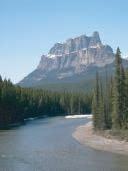

SPEAKER
O mid Haeri- A rdakani University of Windsor
12:00 Noon
Tuesday, A pril 2nd, 2013 ConocoPhillips A uditorium Gulf Canada Square 401 – 9th Avenue S.W. Calgary, A lberta
AB STRACT
This study presents integrated petrography, stable carbon and oxygen isotopes, strontium isotopes and rare earth elements (REE) geochemistry as well as fluid inclusion microthermometry of diagenetic minerals from the Paleozoic carbonates succession of southwestern Ontario, Canada. These data provide new insights into the nature of fluids affecting these rocks and their spatial and temporal relationships. Fractures
in the Paleozoic succession had an important role in reservoir enhancement, channelling of diagenetic fluids and migration of hydrocarbons.
The spatial patterns, extent of dolomitization and dolomite petrography indicate that different hydrologic systems were responsible for dolomitization in each of the stratigraphic intervals considered. Fine-crystalline Devonian and Silurian dolomite formed in early stages of diagenesis whereas coarsecrystalline fracture-related Ordovician dolomite formed in later stages of diagenesis in burial environment and in the presence of hydrothermal fluids.
The distinct 18O fluid , 13C, REE values, and REE SN patterns of dolomite from each age interval suggest compartmentalization of diagenetic fluids. The 18Ofluid and 87Sr/ 86Sr ratios indicate diagenetic fluids in each strata originated from coeval seawater and evolved through water/rock interaction. The more positive 18Ofluid calculated from dolomite 18O values and the high salinity of Ordovician and Silurian brines and less radiogenic 87Sr/ 86Sr ratios of Ordovician dolomite relative to those of coeval seawater indicate mixing of Ordovician and Silurian connate waters with 18O-enriched fluids influenced by dissolution of Silurian evaporites.
The significantly higher dolomite Th values (75 to 120°C) from Devonian to Ordovician units relative to inferred maximum burial temperature (60 to 90°C) of these strata suggest involvement of hydrothermal fluids in the precipitation and/or recrystallization of dolomite. The presence of hydrocarbonbearing fluid inclusions with high Th values
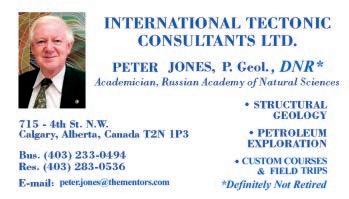
Sponsored by
(>80°C) in late-stage calcite cements from Devonian to Ordovician and their negative 13C values (approaching –32‰ VPDB) implies that hydrothermal diagenetic fluids carried hydrocarbons.
A thermal anomaly along the mid-continent rift during Devonian to Mississippian (Alleghanian orogeny) time likely was the source of excess heat in the Michigan Basin. The potential thermal buoyancy of hot brines was the driving force for migration of hydrothermal fluids from the center of the basin towards its margin through regional aquifers and network of fractures.
Omid Haeri-Ardakani studied geology at the University of Tehran in Tehran, where he obtained his B.Sc. degree in geology in 1993. He completed his M.Sc. in sedimentology in 1997. He worked for the Iranian National Institute of Oceanography (INIO) from 1997 to 2004. He Joined Keyhan Exploration and Production Services (KEPS) in 2004 till 2007. In September 2007 he attended the University of Windsor in Canada, where he started his Ph.D. degree and graduated in July 2012.
BASS Division talks are free. Please bring your lunch. For further information about the division, joining our mailing list, a list of upcoming talks, or if you wish to present a talk or lead a field trip, please contact either Steve Donaldson at 403766-5534, email: Steve.Donaldson@cenovus. com or Mark Caplan at 403-817-2603, email: mcaplan@atha.com or visit our web page on the CSPG website at http://www.cspg.org.
SPEAKER
Susan R . Eaton, P. Geol., P. Geoph., M.Sc. President, SR ECO Consultants Inc
12:00 Noon, Wednesday, A pril 10th, 2013 Nexen Plus 15 Conference Centre Nexen A nnex Building 7th Avenue & 7th Street SW Calgary, A lberta
ABSTRACT
A century ago, Sir Ernest Shackleton’s scientific teams were comprised of geologists and geophysicists who explored Antarctica because it was there and because it was unclaimed by any nation.
During the heroic age of Antarctic exploration, geoscientists discovered volcanoes, mountain ranges, fossils, coal and minerals in this uncharted continent. And, in 1909, geoscientists in Shackleton’s Nimrod Expedition planted the British flag at the Magnetic South Pole.
One hundred years later, Antarctica is still unclaimed by any nation. This mysterious continent belongs to citizens of the world and is development-free until 2041 when the Madrid Protocol, declaring it a place for peace and scientific endeavors, expires.

The world’s final frontier, Antarctica represents an outstanding, outdoor laboratory to research planetary processes, including the impacts of climate change and ocean change. During the past fifty years, the Western Antarctic Peninsula has warmed 3 degrees Celsius, triggering a cascading series of geological and biological changes in this fragile ecosystem which have global implications.
Since 2010, Susan R. Eaton has participated in three expeditions to Antarctica, studying the interplay between plate tectonics, solid earth systems, glaciology, ocean change and climate change. Susan has come face-to-mask with 1,400-pound leopard seals while snorkeling in the Southern Ocean. And, she’s completed the Leadership on the Edge Program, an Antarctic Outward Bound-like school led by polar explorer Robert Swan, OBE. Earlier this year, Susan participated in a Geological Society of America Field Trip to the Falkland Islands, South Georgia and the Western Antarctic Peninsula.
Join Susan on a journey to the Bottom of the World, as she continues the centurylong geological tradition of exploration and discovery in Antarctica.

BIOGRAPH Y
Susan R. Eaton is a geologist, geophysicist, journalist and ‘extreme’ snorkeler. Susan has a B.Sc. Honours in Geology and Biology from Dalhousie University, a B.J. (Journalism) Honours from Carleton University, and a M.Sc. in Petroleum Geology (Geophysics Specialization) from Imperial College, University of London.
She is the Antarctic Explorer-in-Residence for the American Association of Petroleum Geologists and the Houston Geological Society (HGS). Susan was the keynote speaker for the HGS Guest Night 2012, and one of two co-presenters at the 2010 CSPG Honorary Address entitled “The Next Generation of Cool Science.”
Susan has developed a successful career in the Canadian energy sector, attaining the position of Vice President of Exploration in several junior oil and gas companies. Through her wholly owned consultancy, SR ECO Consultants Inc., she consults to the Canadian, American and international petroleum and financial sectors on oil and gas exploration and production, acquisitions and divestitures, environmental risk assessments and media relations.
Susan began her journalism career as a television reporter with CBC-TV. Today, she reports on science and technology, business, oil and gas, renewable energy, the environment, ecotourism and extreme snorkeling. Her articles and photographs have been published in Alberta Oil, New Technology Magazine, Popular Mechanics, the Calgary Herald, the Edmonton Journal, the Vancouver Sun, ALERT Diver, DIVER Magazine, Business Edge News Magazine, AAPG’s EXPLORER Magazine, APEGA’s The PEG and the Financial Post.
Active in several Canadian and American oil and gas industry associations, Susan is a recipient of the Geological Society of America’s Distinguished Mentor Certificate of Appreciation and the AAPG’s Public Outreach Award.
LINKS
http://susanreaton.com/ https://twitter.com/SusanREaton_Geo http://www.youtube.com/user/srecoconsultants
There is no charge. Please bring your lunch. The facilities for the talk are provided complimentary of Nexen, coffee by IHS and refreshments by Geochemtech Inc. The speakers are provided with gifts by Drilling Information and Quad Operations. For further information or if you would like to give a talk, please contact Bob Potter at (403) 863-9738 or ropotter@geochemtech.com or Trent Rehill at (403) 606-6717 or trehill@kulczykoil.ca. Or visit our new Face Book page (“CSPG International Division”).
SPEAKER
George Eynon Board Member, Energy Resources Conservation Board (ERCB)
12:00 Noon
Thursday, A pril 11, 2013 Centennial Place, West Tower 3rd Floor Conference A rea 250 – 5th Street SW Calgary, A lberta
AB STRACT
The ERCB is clear in its mission, which is to ensure the discovery, development, and delivery of Alberta’s energy resources take place in a manner that is fair and responsible, with due regard for public
safety, environmental protection, and resource conservation.
The combination of two technologies— horizontal drilling and multi-stage hydraulic fracturing—has revolutionized oil and gas development in Alberta.
Public concerns about frac’ing generally relate to the potential for groundwater contamination, the toxicity of the chemical additives in the frac fluids, water management and use, storage, treatment and disposal of flow-back fluids, communication between the wells being frac’d and existing ones, and induced micro-seismic events.
Most of the problems with frac’ing that have caught the public’s attention occur in various U.S. states and not in Alberta or other western provinces. This is due in part to the fact that many of the potential problems have already been addressed under our existing regulations—after all, the ERCB has been regulating for almost 75 years!
More than 5,000 horizontal wells in Alberta have been stimulated using multi-stage hydraulic frac’ing technology since 2008. The ERCB developed a draft frac’ing directive and a discussion paper on regulating unconventional resources in Alberta; both were issued for comment by interested parties. Together these two documents address most of the environmental issues of concern to the public.
Sponsored by
George Eynon was appointed as a Board Member of the ERCB in 2008. He sits as a panel member in public hearings adjudicating oil and gas applications disputes. As well, a significant part of his time has been spent advocating appropriate regulation of the industry with delegations from numerous foreign governments.
Prior to his appointment at the ERCB Mr. Eynon was at the Canadian Energy Research Institute. From 1993 to 2004 he provided management and technical consulting services to the petroleum industry, governments, and the financial community worldwide through GEOS Energy Consulting, Cambridge Energy Research Associates, and Ziff Energy Group.
George has spent over 20 years in the upstream oil and gas sector in increasingly senior technical, managerial, and executive positions with major, intermediate and junior exploration and production companies. He has considerable experience in exploration, production operations, strategic planning, and energy economics in Canada, the U.S. and a variety of international areas.
Mr. Eynon has a B.Sc. from London University, an M.Sc.from McMaster University, and completed the Senior Executive Program at MIT. Mr. Eynon is a member of APEGA, CSPG, and AAPG. He has held various senior elected and appointed leadership positions in all three organizations.
DIVISION INFORMATION:
All lunch talks are free and open to the public. Please bring your lunch. For information or to present a talk to the Environment Division please contact Andrew Fox at andrew.fox@megenergy.com.



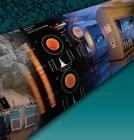


With reservoirs becoming increasingly complex, you need the most accurate information you can get to better understand your reservoir.
Weatherford Labs helps you get more from your core by combining an unsurpassed global team of geoscientists, engineers, technicians and researchers with the industry’s most comprehensive, integrated laboratory services worldwide. From core analysis, sorption, geochemistry and isotopic composition to detailed basin modeling and comprehensive data packages, we provide you with real reservoir rock and fluid information that hasn’t been distilled by a simulator or iterated by software.
We call it “The Ground Truth™” – giving you the accurate answers you need for better reservoir understanding. You’ll call it a better return on your reservoir investment. To learn more, contact TheGroundTruth@weatherfordlabs.com


Spearheaded its industry-leading AccuMap® , Kingdom® and Petra® software and backed most respected forecasting analysis, IHS connects the dots with well, production and land data, strategic planning, and workflows stand up to asset challenges. mapping, interpretation and engineering software suites with the Canadian trusted source of E&P data you a definitive edge.


Visit IHS at GeoConvention 2013 May 6-8 | Booth #515

Surface to subsurface, only one energy expert provides so much to so many. From big picture to critical detail, proven capabilities to superior results, IHS provides the solutions to your energy challenges.


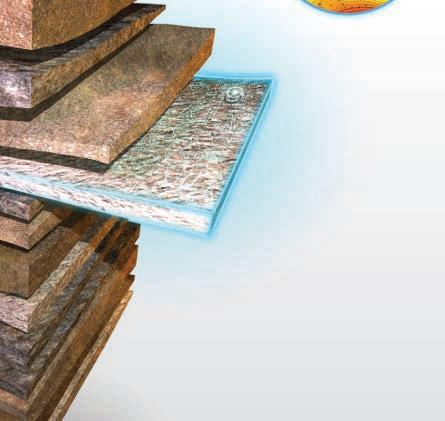





SPEAKER
Sarda SahneyUniversity of Bristol Ph. D. Candidate
7:30 pm
Friday, A pril 19th, 2013
M ount Royal U niversity Room B108
Calgary, A lberta
AB STRACT
In the last few decades public consumption of science stories has increased dramatically. Perhaps this is because of improving science education in schools or a greater accessibility to information due to recent advances in communications; regardless of the reason,
people are reading fiction and non-fiction science stories more widely. In the news, science-related stories are featured by all major news outlets, in the form of health news, environmental realizations, technological advances and occasionally pure science stories.
How does a scientific discovery become news?
A scientist must take many steps to create a story which is palatable to the public, a course of action in which researchers take guidance from communications experts. Often this means stripping down the science and increasing the amount of contextual information to allow a layman to fully understand the implications of the work. A specific aspect of the story may be exaggerated to make the science seem more ‘sexy’ and this may be used as a ‘hook’ to create a personal connection between the reader and the story.
After a story is processed in this manner it may be hard to distinguish the science from the spin. A greater understanding of the process of how scientific exploration, discovery, and invention becomes news, enables readers to more critically analyze content distributed through news agencies and be better able to
•Now offering a proprietary core index on-line via STONECODE HUB.
•Over 11,000 Carbonate and Clastic core interval descriptions in the WCSB available.
•If you cannot visit the core, the SCG interpretation can visit you, on your desktop.
•For a full listing of available core descriptions go to www.scgltd.com and follow the links.
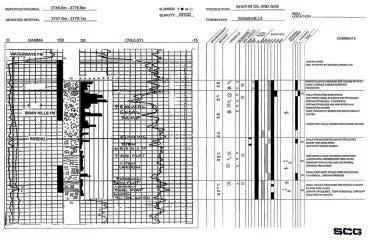
Stoakes Consulting Group Ltd
Suite 402, 103 - 10th Avenue NW, Calgary, AB, Canada T2M 0B4
Sponsored by
separate reported research from the hype that surrounds it.
BIOGRAPH Y
Sarda Sahney is a researcher at the University of Bristol studying macroevolution, with a focus on the evolution of vertebrate communities. She studies the biodiversity of tetrapods, from the perspective of biodiversity, expansion and extinction in the fossil record. In particular she has written about the early diversification of tetrapod ecosystems, the effects of the Permo-Triassic Mass extinction and large scale influences on the shape of biodiversity
This event is jointly presented by the Alberta Palaeontological Society, Mount Royal University Earth Science Department, the CSPG Palaeontology Division and Cenovus Energy. For details or to present a talk in the future please contact CSPG Paleo Division Chair Philip Benham at 403-691-3343 or APS Coordinator Harold Whittaker at 403-286-0349 or contact programs@albertapaleo.org. Visit the APS website for confirmation of event times and upcoming speakers: http://www.albertapaleo.org/.
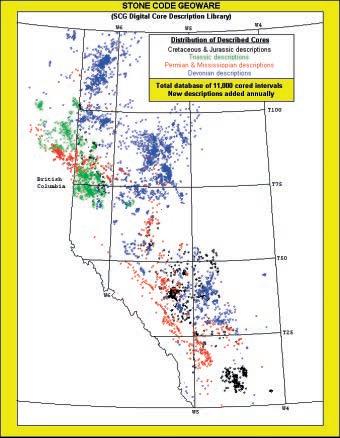
ph: (403) 262-6003 fax: (403) 265-4662 email: stonecode.scg@shaw.ca

Reservoir Geomodeling Reservoir Simulation
Julee Lee (403) 554-3957, Helen Cao (403) 968-6268, Gary Selby (403) 818-1594
jlee@petrosteer com, hcao@petrosteer com, gselby@petrosteer com
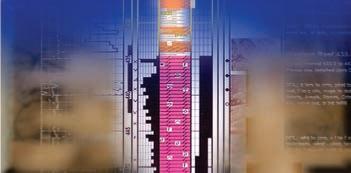



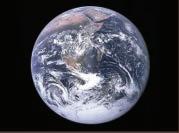
E. R. (Ross) Crain. P.Eng. 1-403-845-2527 ross@spec2000.net







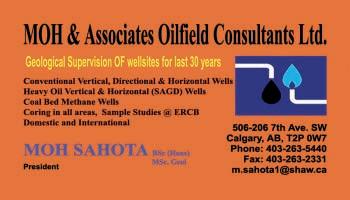
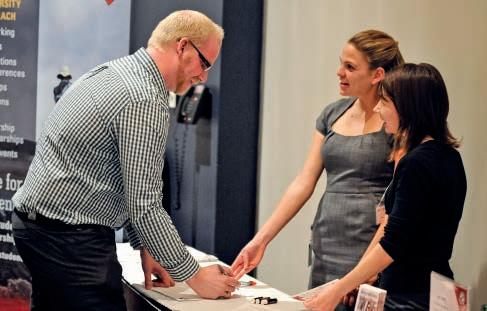
The sixth annual GeoSkills event took place at the Metropolitan Centre in downtown Calgary on February 6, 2013. This year’s conference was well attended by industry professionals, academics, and earth sciences students from the University of Alberta, the University of Calgary, and Mount Royal University.
For those who have not yet had the opportunity to attend and are, as yet, unfamiliar with the event, GeoSkills is a one-day student-industry training day and geosciences mixer. The conference is organized by a committee made up of students and industry professionals and facilitated by APEGA. The main objective of GeoSkills is to bring quality speakers, students, and industry professionals together for a day of learning and exchange.
The conference includes geosciences related talks, a panel discussion, and an evening mixer. This year’s talks were diverse, covering technical, academic, and careerrelated subjects. According to attendees, one of the most engaging talks was Dr. Beauchamp’s, “Choosing an Academic Career in Geoscience: Sheer madness or best move ever?” In the great tradition of the geoscience lecture, the talk, which compared careers in academia with those in industry, masterfully interwove
information with humour. The midday panel discussion, “The Road to Success in a Geoscience Career”, gave students further opportunity to hear different perspectives on geosciences-related career paths.
According to Gordon Robertson, a geologygeophysics double degree student from the University of Calgary who attended the conference, “GeoSkills is a great opportunity for undergrads to hear from industry professionals in their field of expertise.” By including both technical and career-related talks, the conference helps students better understand both the practical application of what they are learning in the classroom and
the diversity of geosciences career options available. The evening mixer also offers students an opportunity to meet industry professionals and ask technical or careerrelated questions. As Gordon explains, “this event is one way in which students get to start or continue to build networking skills.”
The event also offers many benefits to industry professionals who participate as speakers or attendees. GeoSkills gives professionals a unique opportunity to connect with geosciences students from three Alberta universities and offers interesting and diverse talks. The conference is a great way to give back to the community, share your experience with up-and-coming geoscientists, and learn something new by taking in diverse technical talks.
For many of the student attendees, GeoSkills is their first conference and networking event. GeoSkills is unique in that it offers high calibre technical talks, yet is student-driven and student-oriented. This student-focus, together with the low student registration cost and central location, make GeoSkills far more accessible than most academic or industry-run geosciences conferences.
The event is made affordable, and indeed possible, by the generous support of professional associations (APEGA, CSPG, CSEG, and CWLS) and energy companies. The event’s success depends heavily upon industry: as sponsors, speakers, and / or attendees. The CSPG is glad to have been able to contribute, both as a sponsor and participant, and looks forward to next year’s GeoSkills conference.

 CSPG University Outreach Committee members, Jane Marzetti and Melanie Klucker, speaking with University of Calgary geosciences student, Gordon Robertson, at the GeoSkills 2013 evening mixer. (Photo credit: Mohammed Al-Ibrahim, G.I.T.)
CSPG University Outreach Committee members, Jane Marzetti and Melanie Klucker, speaking with University of Calgary geosciences student, Gordon Robertson, at the GeoSkills 2013 evening mixer. (Photo credit: Mohammed Al-Ibrahim, G.I.T.)
On June 20-21, 2013, at the Elbow Springs Golf Club in Calgary, the CSPG celebrates the 53rd Annual CSPG Classic Golf Tournament.
If you have ever wondered whether to participate in the CSPG Classic Golf Tournament, consider the following statistics from last year:
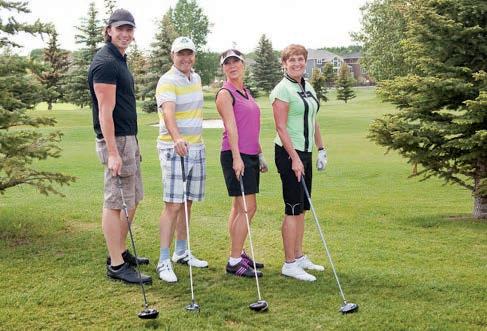
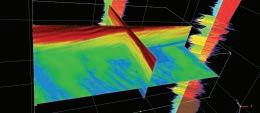


The CSPG Classic included geologists and geophysicists representing 44 separate E&P companies ranging from private and small cap juniors to large billion dollar multi-nationals.
Industry support services teed-up alongside the geoscientists and supported the tournament. These 36 companies represented several facets of our daily evaluation and operational activities including database and mapping, analysis, well-logging, reserves evaluation and financial institutions, well site personnel and services.
Where else can you access such a variety of industry personnel and company contacts in such a short time?
“I have gained lasting business and personal contacts at the CSPG Classic Golf Tournament over the past 25 years. Now I encourage my geosciences staff to participate for the same reasons.”
Pat Ward, President & CEO Painted Pony Petroleum Ltd.
HOW MUCH TIME DOES IT TAKE?
The actual golf time only includes 2-half days, Thursday afternoon tee off at 1:00 pm and Friday morning tee-off at 7:00 am after breakfast. If required, both work and golf can be accomplished in the same day. For instance, last year I had work commitments on the Thursday morning and Friday afternoon, and completed both Classic rounds of golf.
The 53rd CSPG Annual Classic Golf Tournament includes two rounds of ‘match play’ golf with power carts, on course sponsor tents with refreshments and food, two evening dinners, Friday breakfast with the awards banquet and entertainment on Friday evening at the Calgary Petroleum Club. The tournament features $10,000 in prizes and draws including 2 vacation trips, BBQ, daily hole and skill prizes.
Be there and register early at http://www. cspg.org/events/events-social-classicgolf.cfm
The 53rd Annual CSPG Classic Golf Tournament charity partner benefiting from special events held during the tournament is “CSPG Educational Trust Fund.”
Mike LaBerge, Chairman
CSPGClassic Golf Committee
The R.J.W. Douglas Medal is presented annually for outstanding scientific contributions to the understanding of sedimentary geology in Canada commending major contributions to regional tectonics, petroleum, and structural geology. The award is open to all geologists who follow the example of R.J.W. (Bob) Douglas in contributing to the development of Canadian sedimentary, petroleum, and structural geology.
The R.J.W. Douglas Medal Award Committee is please to present Guy Plint as the recipient of the 2012 award.
Over the past three decades Guy Plint has dedicated his professional career to a systematic analysis of the sedimentary dynamics of the Cretaceous of the Western Canada Foreland Basin. Realizing early on that the unparalleled stratigraphic control available from logs and cores combined with fine outcrops make these rocks what must be the world’s best natural laboratory in which to investigate basin history, his goal has been to decipher the controls
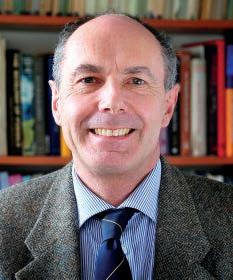
exerted on sedimentation by eustasy and tectonism, and especially the causes of depositional cyclicity, in this foreland basin. His investigations, along with those of the many graduate and senior undergraduate students he has supervised, have resulted in nearly 70 peer-reviewed journal articles
and book chapters, a remarkable canon of research indeed.
These papers combine scales of observation from the millimetric to the basin-scale, and the documentation provided by the extensive correlations and isopach maps shows how the stratigraphic packaging and regional patterns have evolved in tandem with the evolution of the Laramide orogen. Guy has virtually singlehandedly shown how the allostratigraphic approach uniquely reveals geometric and stratigraphic complexities hitherto obscure, especially in mudstone successions. He was the first to elucidate sharp-based and detached lowstand shorefaces, which led to the formal definition of the Falling Stage Systems Tract, a key component in modern sequence stratigraphy. His chapter in the globally popular Facies Models textbook has educated legions of students and professionals about sedimentation on clastic shelves. Guy’s contributions to the stratigraphy of Western Canada and to academic sedimentology are more than worthy of the R.J.W. Douglas Medal.
Detailed and accurate geology at your fingertips in Petra, GeoGraphix, ArcGIS, AccuMap, GeoScout and other applications for information contact: Joel Harding at 403 870 8122 email joelharding@geoedges.com www.geoedges.com
Western Canada: Slave Point, Swan Hills, Leduc, Grosmont, Jean Marie, Horn River Shales, Elkton, Shunda, Pekisko, Banff, Mississippian subcrops and anhydrite barriers in SE Sask., Bakken, Three Forks, Montney, Halfway, Charlie Lake, Rock Creek, Shaunavon, BQ/Gething, Bluesky, Glauconitic, Lloyd, Sparky, Colony, Viking, Cardium, Horseshoe Canyon and Mannville CBM, Oilsands Areas, Outcrops
Northern US Rockies & Williston Basin Geological Edge Set
Western Canada Geological Edge Set
North American Shales Geological Edge Set
Eastern US / Appalachian Basin Geological Edge Set
Texas & Midcontinent US Geological Edge
US Rockies & Williston: Red River, Mississippian subcrops & anhydrite barriers (Bluell, Sherwood, Rival, etc), Bakken, Three Forks, Cutbank, Sunburst, Tyler, Heath, Muddy, Dakota, Sussex, Shannon, Parkman, Almond, Lewis, Frontier, Niobrara, Mesaverde shorelines, Minnelusa, Gothic, Hovenweep, Ismay, Desert Creek, Field Outlines, Outcrops
Texas & Midcontinent: Permian Basin paleogeography (Wolfcampian, Leonardian, Guadalupian), Granite Wash, Mississippian Horizontal Play, Chat, Red Fork, Morrow, Sligo/Edwards Reefs, Salt Basins, Frio, Yegua, Wilcox, Eagleford, Tuscaloosa, Haynesville, Fayeteville-Caney, Woodford, Field Outlines, Outcrops, Structures
North American Shales: Shale plays characterized by O&G fields, formation limit, outcrop, subcrop, structure, isopach, maturity, stratigraphic cross-sections. Includes: Marcellus, Rhinestreet, Huron, New Albany, Antrim, Utica-Collingwood, Barnett, Eagleford, Niobrara, Gothic, Hovenweep, Mowry, Bakken, Three Forks, Monterey, Montney, Horn River, Colorado
Eastern US / Appalachia: PreCambrian, Trenton, Utica-Collingwood, Medina-Clinton, Tuscarora, Marcellus, Onondaga Structure, Geneseo, Huron, Antrim, New Albny, Rhinestreet, Sonyea, Cleveland, Venango, Bradford, Elk, Berea, Weir, Big Injun, Formation limits, Outcrops, Allegheny Thrust, Cincinatti Arch, Field outlines
Deliverables include:
-Shapefiles and AccuMap map features
-hard copy maps, manual, pdf cross-sections
-Petra Thematic Map projects, GeoGraphix projects, ArcView map and layers files
-bi-annual updates and additions to mapping
-technical support

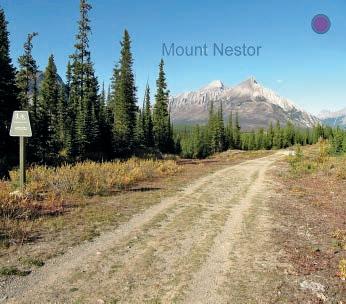
REFERENCES:
Daffern, G. 1994. Canmore and Kananaskis Country, 2nd edition, p. 172-177. Rocky Mountain Books, Surrey, British Columbia, 296 p.
Toop, D.C. and de la Cruz, N.N. 2002. Hydrogeology of the Canmore Corridor and northwestern Kananaskis Country, Alberta. Alberta Environment, Hydrogeology Section, Report, http://environment.gov.ab.ca/info/ posting.asp?assetid=5977&subcategoryid=222
The Reservoir Committee welcomes contributions from our readership to this series. If you wish to offer a submission to Go Take a Hike on your favourite hike of geological interest, email the Reservoir at caitlin.young@cspg.org for more information.

Trailhead: From Canmore, follow signs to the Canmore Nordic Centre but stay on Spray Lakes Road, which becomes the Smith Dorrien/Spray Trail, a well-maintained gravel road. The road climbs up past the Spray Lakes dam and follows the eastern shore of the Spray Lakes reservoir (see NTS Map 82 J/14). At approximately 38 km, turn right (west) at the Mount Engadine Lodge/Mount Shark Road turnoff. Cross the bridge and follow the road for about 5.5 km past the Mt. Shark helipad to the Mt. Shark trailhead at the end of the road. The trail leaves from the sign at the northeast corner of the parking lot.
Distance: 9.5 km return from the Mt. Shark trailhead. A fairly easy hike on a good trail; the walking time is about 3 to 4 hours, return.
Elevation gain: around 60 m; the only moderately steep section is the last few hundred meters before you reach the spring.
The first part of the trail follows an old logging road that is now part of the Mt. Shark crosscountry ski trail system and biathlon course. Hike westward, following the signs pointing to “Watridge Lake” and “Karst Trail” through a previously logged area that is now covered by young conifers and wildflowers. In this area you will have good views of the Paleozoic and Mesozoic strata of the surrounding mountain ranges.
At about 3.6 km, after the trail has climbed uphill a bit and passed into mature forest, turn left (no Watridge/Karst trail sign here at present) and follow the road/trail downhill a short distance to Watridge Lake. At the lake you will have excellent views of Cone Mountain and Mount Turner.
Follow the log boardwalk across the swamps bordering the lake. As the trail passes into the shadow of Mt. Shark, you will notice the air becoming cold and damp. Soon you will come to Elizabeth Falls, the torrent of cold water that flows down from the spring. The large volume of cold water, combined with the shade of the north-facing slope, produces a distinctive environment characterized by old-growth spruce and an abundance of mosses and lichens. The trail ends at the viewing platform at Karst Spring.
The spring is fed by an unmapped karst and fracture system and emanates from an outcrop of massive dolomitic limestone belonging to the Late Devonian (Famennian) Palliser Formation. The main outlet of the spring is located in the back wall of the outcrop, but when flow rates are high, water can be seen gushing from additional points below the surface of the pool (Yellow Dot). According to Toop and de la Cruz (2002), the flow rate is in excess of 2,400 L/min, and the water is rich in Ca, Mg, bicarbonates and sulphates with total dissolved solids (TDS) of 150 mg/L. Daffern (1994) suggests that Karst Spring may be the largest of its type in North America. Whether that is true or not, it’s certainly a memorable sight
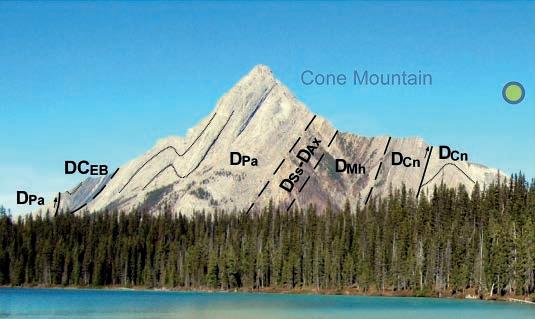
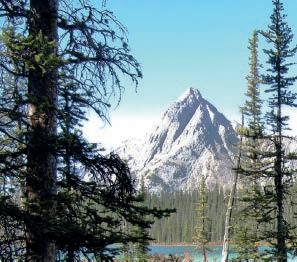

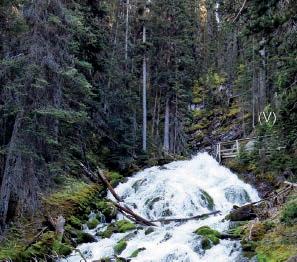
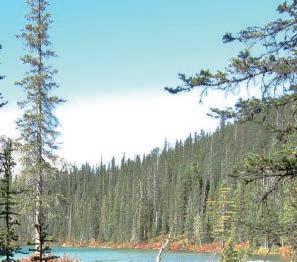
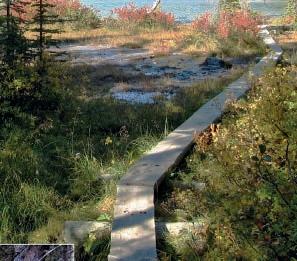




Swamps, flora and boardwalk at Watridge Lake.
Elizabeth Falls descends from Karst Spring at viewing platform (V) through Karst Spring with low flow rate in Sept. 2011. Its strength varies with the seasons, with a more robust flow coming with the summer melt. Note the steeply dipping beds of the Palliser Formation (blue lines). Beds are cross-cut by fractures (some outlined by dashed white lines).
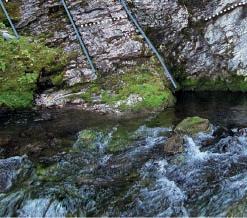

Methodology for Describing Clastic and Carbonate Cores
Instructor: Eva Drivet & Lisa Griffith
Dates: April 22, 2013
Price: $790.00 CDN/ $915.00 CDN*
Topic: Methodology & Core Data
Practical Sequence Stratigraphy: Concepts and Applications
Instructor: Ashton Embry
Dates: April 22 & 23, 2013
Price: $800.00 CDN/ $925.00 CDN*
Topic: Sedimentology
Geochemical and Non-Seismic Detection of Hydrocarbons: Theory, Methods and Exploration Case Studies
Instructor: Dietmar Schumacher
Dates: April 22 & 23, 2013
Price: $810.00 CDN/ $935.00 CDN*
Topic: Geophysics, Petrophysics & Geochemistry
Conflict Resolution - Creating Win -Win Solutions with Collaborative Results
Management and Problem Solving Skills
Instructor: Bruce Lee
Dates: April 23, 2013 (morning only)
Price: $175.00 CDN/ $300.00 CDN*
Topic: General Interest & Soft Skills
Introduction to Petrophysics - One Day Review
Instructor: Winston Karel
Dates: April 24, 2013
Price: $575.00 CDN/ $700.00 CDN*
Topic: Geophysics, Petrophysics & Geochemistry
*Non-member rate.
Oil Sands In-Situ Scheme ApplicationLegal and Regulatory Issues of Importance to Geoscientists
Instructor: Brad Gilmour & Neil Stalport
Dates: April 25, 2013
Price: $500.00 CDN/ $625.00 CDN*
Topic: Economics
Introduction to Reservoir Engineering for Geologists
Instructor: Mike Carlson
Dates: April 25 & 26, 2013
Price: $1,200.00 CDN/ $1,325.00 CDN*
Topic: Reservoir Simulation & Geomechanics
Rock Creek Stratigraphy, Sedimentology and Petroleum Geology
Instructor: Doug Cant
Dates: April 29, 2013
Price: $625.00 CDN/ $750.00 CDN*
Topic: Reservoir Characterization
Neural Network Application for Advanced Reservoir Characterization: Practical Approach
Instructor: Azer Mustaqeem & Valentina Baranova
Dates: April 29, 2013
Price: $700.00 CDN/ $825.00 CDN*
Topic: Computational Geoscience
SAGD Fundamentals - Application of Core, Geology, Geophysics and Geochemistry to oil sands Recovery
Instructor: Rudy Strobl, Milovan Fustic & Daryl Wightman
Dates: April 29, 2013
Price: $890.00 CDN/ $1,015.00 CDN*
Topic: Reservoir Characterization
Principles of Stratigraphy: Lithostratigraphy, Chronostratigraphy & Allostratigraphy
Instructor: Andrew Miall
Dates: April 30 & May 1, 2013
Price: $855.00 CDN/ $980.00 CDN*
Topic: Sedimentology
Carbonate Core Workshop
Instructor: Eva Drivet, David Hills & Laurie Slezak
Dates: May 1, 2013 (morning only)
Price: $435.00 CDN/ $560.00 CDN*
Topic: Reservoir Characterization
Shale Gas Critical Fundamentals, Techniques and Tools for Exploration
Instructor: Basim Faraj
Dates: May 1, 2013
Price: $825.00 CDN/ $950.00 CDN*
Topic: Reservoir Characterization
Clastic Facies and Depositional Environments in Core
Instructor: Bill Arnott
Dates: May 1 - 3, 2013
Price: $1,525.00 CDN/ $1,650.00 CDN*
Topic: Methodology & Core Data
Seismic and Geological Interpretation in Structurally Complex Settings
Instructor: Marian Cooper & Mark Cooper
Dates: May 1 - 3, 2013
Price: $1,650.00 CDN/ $1,775.00 CDN*
Topic: Geophysics, Petrophysics & Geochemistry
Introduction to Directional Drilling and Geological Placement
Instructor: Glen Eckert
Dates: May 2, 2013
Price: $825.00 CDN/ $950.00 CDN*
Topic: Drilling
An Introduction to Petroleum Geostatistics
Instructor: Clayton Deutsch
Dates: May 2 & 3, 2013
Price: $1,100.00 CDN/ $1,225.00 CDN*
Topic: Computational Geoscience
The Architecture of Fluvial Reservoirs
Instructor: Andrew Miall
Dates: May 2 & 3, 2013
Price: $855.00 CDN/ $980.00 CDN*
Topic: Sedimentology
Subsurface Methods in Clastic Sediments
Instructor: Doug Cant
Dates: May 2 & 3, 2013
Price: $1,000.00 CDN/ $1,125.00 CDN*
Topic: Methodology & Core Data
Viscous Oil Production Methods and Geoscience Screening Criteria
Instructor: Maurice Dusseault
Dates: May 2 & 3, 2013
Price: $1,275.00 CDN/ $1,400.00 CDN*
Topic: Reservoir Simulation & Geomechanics
Advanced Topics in Directional Drilling and Geological Placement
Instructor: Glen Eckert
Dates: May 3, 2013
Price: $825.00 CDN/ $950.00 CDN*
Topic: Drilling
Communicating GeoScience: Writing and Talking About Rocks
Instructor: Matt Hall
Dates: May 3, 2013
Price: $350.00 CDN/ $475.00 CDN*
Topic: General Interest & Soft Skills
Deepwater Petroleum Systems with an Emphasis on Reservoir Characterization
Instructor: Grant Wach
Dates: May 9, 2013
Price: $550.00 CDN/ $675.00 CDN*
Topic: Reservoir Characterization
Understanding Financial Statements
Instructor: Peter Flynn
Dates: May 13, 2013
Price: $550.00 CDN/ $675.00 CDN*
Topic: Finance
Time Management - Strategies, Tips & Techniques to Get Control of Your Day, Life and Career
Instructor: Bruce Lee
Dates: May 13, 2013
Price: $350.00 CDN/ $475.00 CDN*
Topic: General Interest & Soft Skills
Sequence Stratigraphy: Principles and Applications
Instructor: Octavian Catuneanu
Dates: May 13 & 14, 2013
Price: $1,170.00 CDN/ $1,295.00 CDN* Topic: Sedimentology
Introduction to RDA Software
Instructor: Andrew Newson
Dates: May 13 - 15, 2013
Price: $1,475.00 CDN/ $1,600.00 CDN* Topic: Computational Geoscience
Practical Geomechanics for Unconventional Oil and Gas
Instructor: Pat McLellan
Dates: May 15 & 16, 2013
Price: $1,500.00 CDN/ $1,625.00 CDN* Topic: Reservoir Simulation & Geomechanics
Mannville Stratigraphy, Sedimentology and Petroleum Geology
Instructor: Doug Cant
Dates: May 15 - 17, 2013
Price: $1,775.00 CDN/ $1,900.00 CDN*
Topic: Reservoir Characterization
Basic Survival Petrophysics Course
Instructor: Winston Karel
Dates: May 15 - 17, 2013
Price: $1,600.00 CDN/ $1,725.00 CDN*
Topic: Geophysics, Petrophysics & Geochemistry
*Non-member rate.
AGAT Laboratories
Apoterra Seismic Processing Ltd.
ARC Resources Ltd.
Arcis Seismic Solutions
Cabra Consulting Ltd.
Canadian Natural Resources Ltd.
CGG Veritas Services Inc.
Compass Directional Services
Continental Laboratories Ltd.
Cossack Land Services Ltd.
Crescent Point Energy Trust
Datalog Technology Inc.
Edge Technologies Inc.
Encana Corporation
Exova Canada Inc.
Explor
GeoTir Inc.
GLJ Petroleum Consultants Ltd.
IHS
Kulczyk Oil Ventures
LXL Consulting Ltd.
McDaniel & Associates Consulting Ltd.
MOH & Associates Oilfield Consultants
National Oilwell Varco
Nickpoint Environmental Services
Olympic Seismic Ltd.
Paradigm Geophysical Corp.
Pason Systems Corp.
Perpetual Energy Inc.
Pioneer Professional Group
Pro Geo Consultants
ProActive Health
Pulse Seismic
Regent Resources Ltd.
Rigsat Communications
RPS Energy Canada Ltd.
SAExploration
Schlumberger Canada Limited
SeisWare
Sensor Geophysical Ltd.
Sigma Explorations Inc.
Sourcex
Total Gas Detection Ltd.
Trident Exploration Corp.
Western Geco
AS OF MARCH 10, 2013
CSPG welcomes our 2013 Corporate Supporters!
The benefits of being a corporate member include:
• Recognition in the monthly Reservoir and quarterly Bulletin
• One associate membership
• Reserved tables at the technical luncheons with your company logo
• One free pass to the CSPG Core Conference
…and more! Contact Kasandra Klein at kasandra.klein@cspg.org to be a corporate member today!
The President’s award is the highest CSPG volunteer honor. It is awarded for sustained and distinguished service to the Society. Recipients are selected by the President at the end of his term. Past winners share the traits of providing exemplary leadership in a variety of roles and capacities that the Society recognizes as a model of service and achievement to be emulated. Many recipients continue their contributions to Society programs and events, such that this award often provides a milestone in a distinguished career of exemplary membership.
Kirk Osadetz has been volunteering with the CSPG for over 20 years. This includes two terms on the CSPG Executive Committee with the last year as Past President of the society. He is a graduate of the U of T (B.Sc. Geology 1978 and M.Sc. 1983.)
Today, Kirk is the Head of Energy Geoscience with the Geological Survey of Canada (GSC). Kirk is fondly known as an active scientist. He has led geoscience research programs for the Office of Energy Research and Development and numerous other agencies. Before joining GSC, Kirk worked for Gulf Canada Resources Inc. and Petro-Canada Exploration Inc.
Kirk’s record with CSPG spans:
• Past-President (2012)
• President (2011),
• Vice-President (2010);
• Co-Convenor of the Third Symposium on Resource Assessment Methodologies (Canmore, 2010) and a Guest Editor of the resulting thematic issue of the Bulletin of Canadian Petroleum Geology (2012)
• Co-Convenor of the International Lithosphere Program Workshop on Tectonostratigraphic Events at Continental Margins and their Significance for Hydrocarbon Resources (Quebec, 2006) and a Guest Editor of the resulting thematic issue of the Bulletin of Canadian Petroleum Geology (2010, v. 58/1)
• CSPG Director (Treasurer, 1993),
• Director (Assistant Treasurer, 1992),
• Associate Editor of the Bulletin of Canadian Petroleum Geology, two terms
• Co-Chair Technical Luncheon/Program Committee (with June Barker, 1994-97);
• CSPG Technical Program Co-Chair (Diamond Jubilee Convention, 2002)
• CSPG Technical Program Co-Chair (joint CSPG-CSEG-CWLS Annual Convention, 2006)
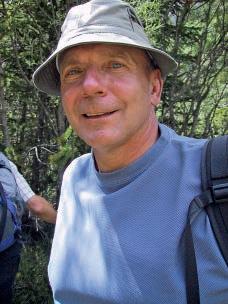
• CSPG Core Conference Chair (Pools ’96, 1996)
During Kirk’s Presidency, he set new tracks for CSPG:
• CSPG members have approved new By-Laws laying the foundation to be governed under the new NPO Act.
• CSPG held a geomodeling Gussow conference that will soon be releasing peer reviewed abstracts in the form of a Memoire.
• Kirk encouraged additional technical content; promoting the addition of short abstracts; and
• Thanks to Kirk, we now have a slogan –“Canada’s Energy Geoscientists.”
Kirk is also the recipient of many awards:
• Coleman Gold Medal in Geology (University of Toronto, 1978)
• Chevron Scholarship (University of Toronto, 1977)
• CSPG Tracks Awards (2 – 1997; 2002)
• CSPG Annual Convention Best Poster Runner-Up Award (2002?)
• CSPG Service Award (2006)
• CSPG Volunteer Award (2007)
• CSPG Hunter Volunteer Award (2008)
• Petroleum Technology Alliance of Canada Volunteer Achievement Award (2009)
• NRCan Earth Sciences Sector and Divisional Merit Awards (3)
And now
• The CSPG President’s Award 2012
www.apega.ca
At APEGA we like to make science fun! We also hope to attract the best and brightest students to careers in geoscience. And we remain committed to building strong relationships with the geoscience community. Put that all together and you get an active geoscience outreach and sponsorship program.
In fact, every year APEGA provides in-kind donations and thousands of dollars to multiple groups as a sponsor of organizations and events including: Alberta Science Literacy Association, Alberta Women’s Science Network, Canmore Museum and Geoscience Centre, Doodle Train, Earth Sciences for Society, Geophysics Undergraduate Student Society, Geoscience Day, Honorary Address, P.S. Warren Undergraduate Geological Society, Rock ‘N’ Fossil Clinics, Rundle Group of Geology, Seismic in Motion, Stones and Bones Summer Camp, TELUS World of Science, TELUS Spark and W.C. Gussow Geoscience Conference as well as multiple science olympics and science fairs.
That’s because, like you, we see sponsoring geoscience outreach organizations and events as an investment in future human capital and an important opportunity to raise awareness of the wealth generation and quality of life made possible by geoscientists right here in Alberta.
By working with Alberta’s geoscience community, we help to ensure that today’s students become tomorrow’s geoscience leaders.
For more information: Tom Sneddon, P.Geol. Director Geoscience and Outreach
P: 403-262-7714 or 888-262-3688
E: tsneddon@apega.ca
